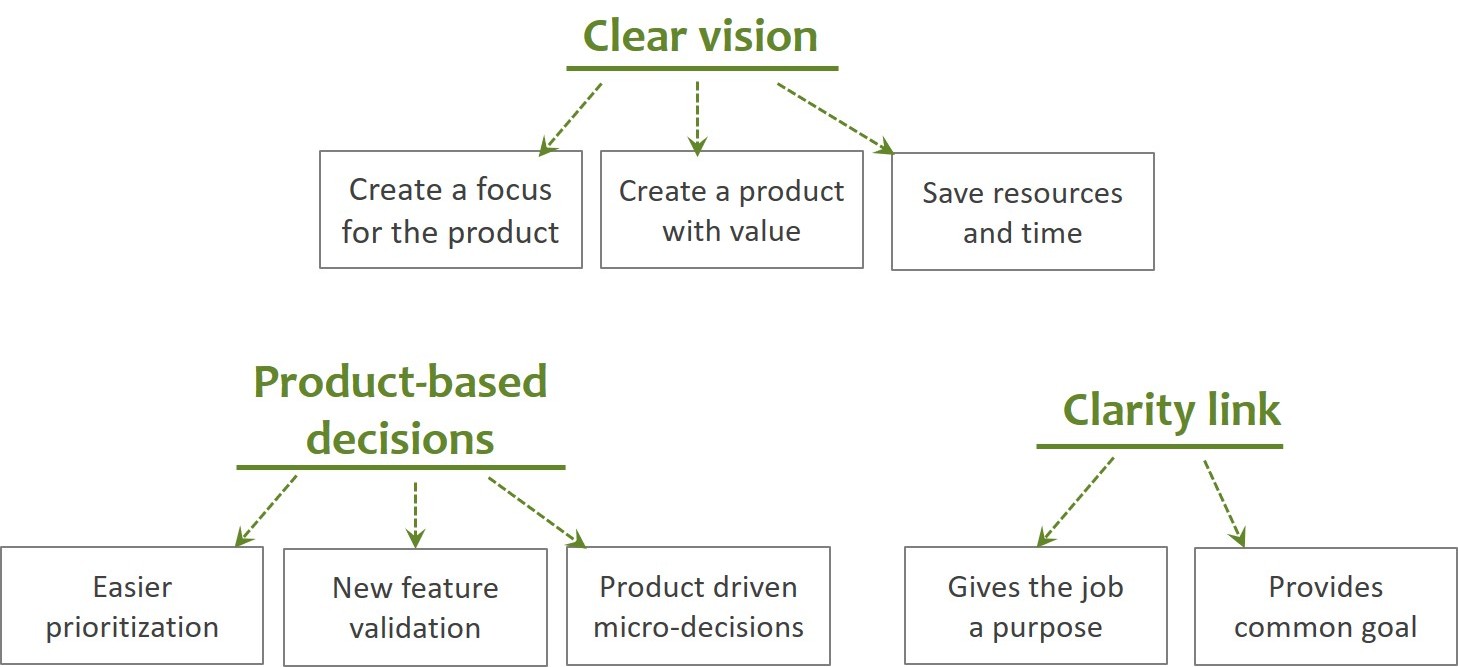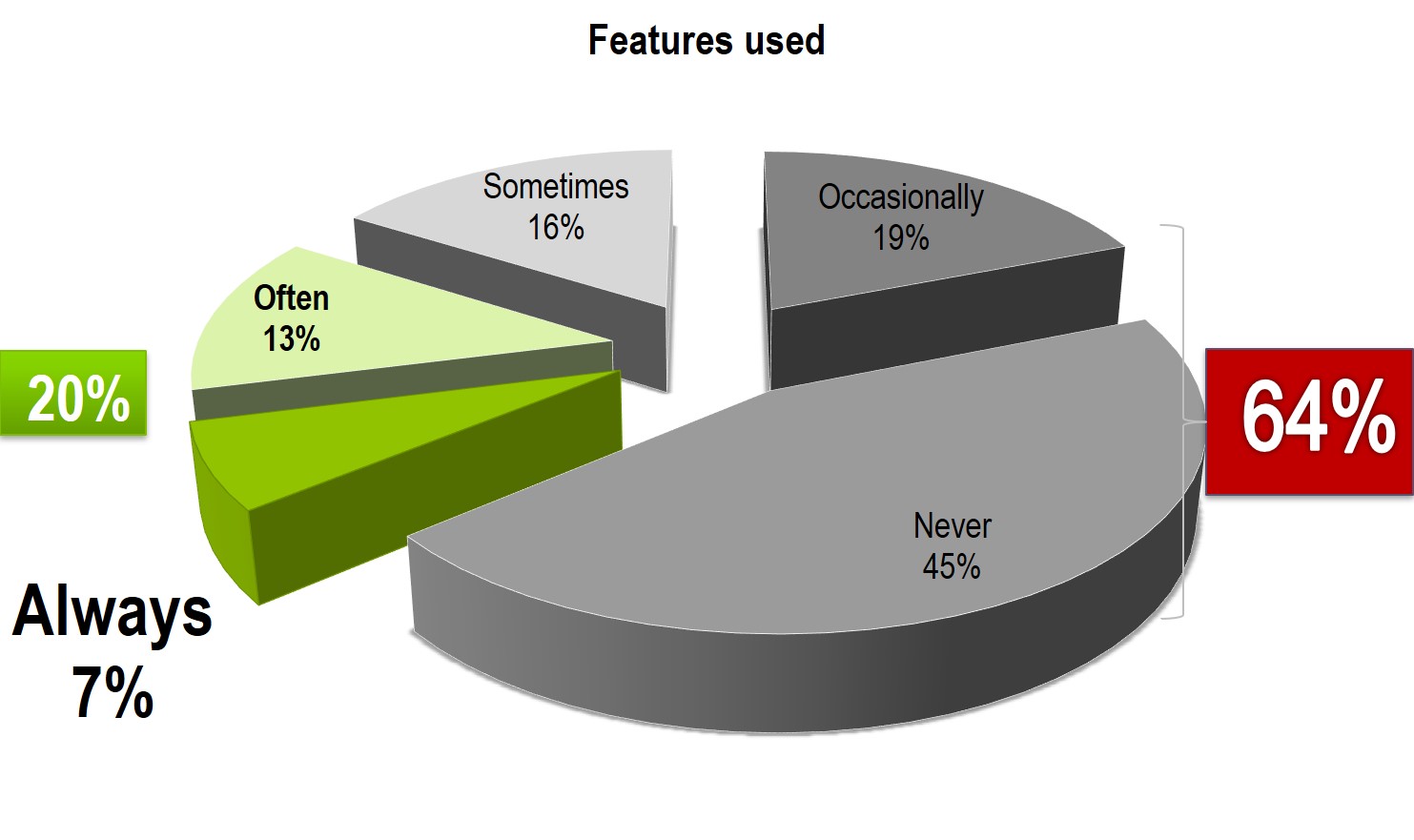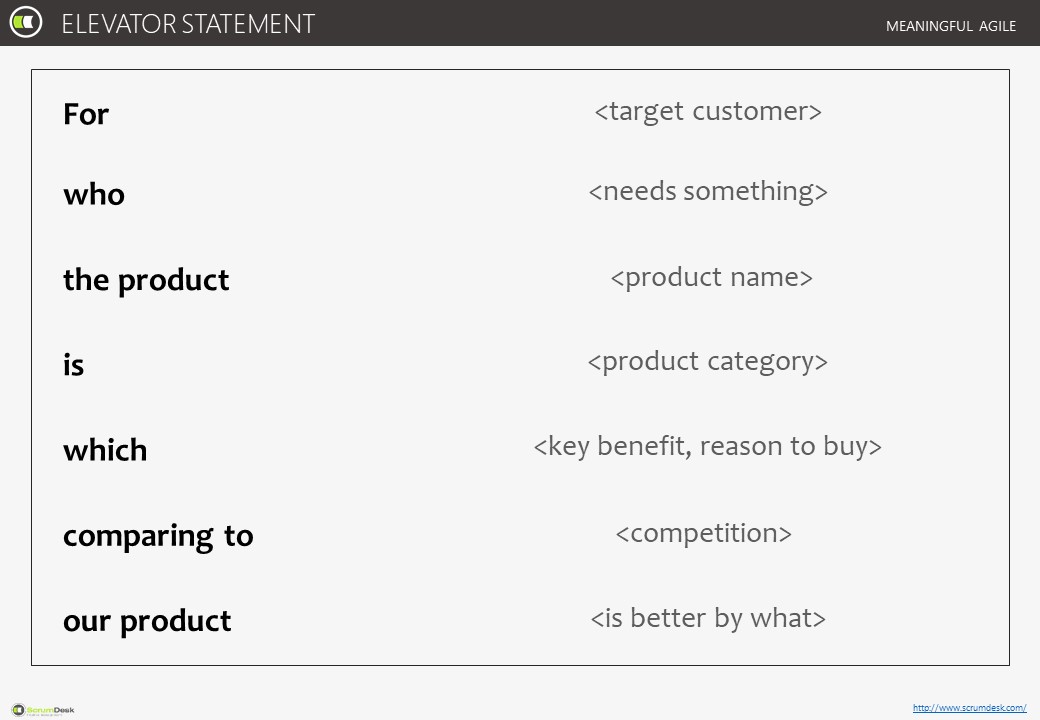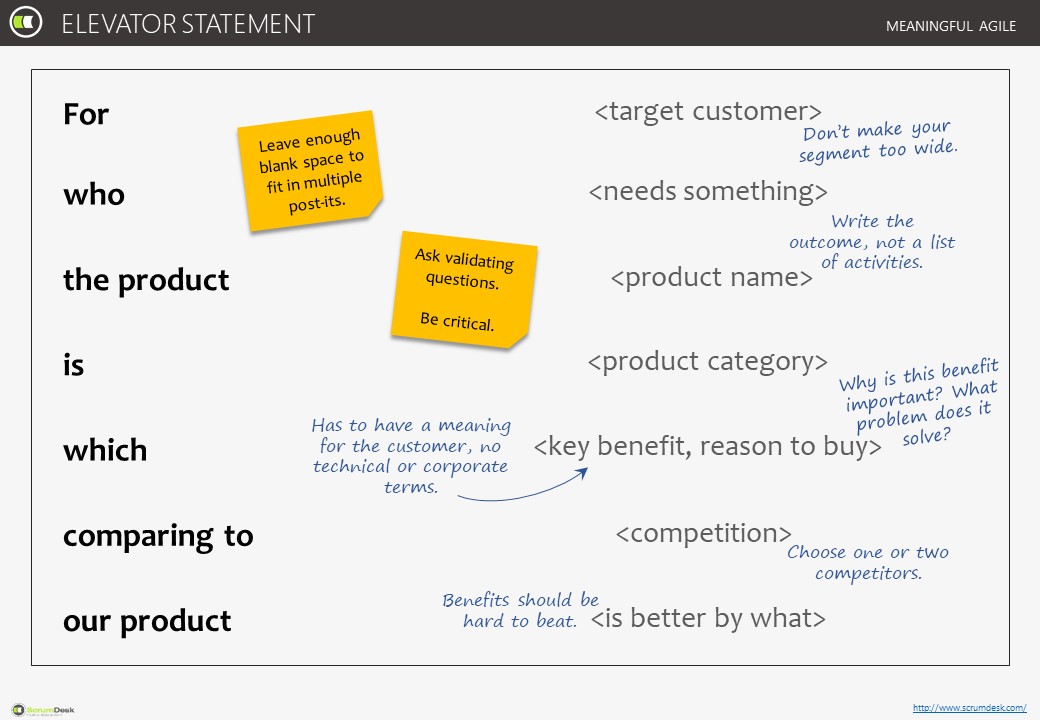Previously, we’ve shown you how to write a great elevator statement and some real-life examples. In this post, we’ll show you why you should start writing an elevator statement right now and how it can help you not just create a valuable product for the customer, but also make the development easier.
An elevator statement for your product
Saves time and resources
If we break down the product into small parts before we start developing, we create focus and limit the number of product features, avoiding the product that does everything for everyone. Another possibility is that we realize, we don’t know why we’re creating the product, or realize it’s not needed. But that’s a good thing! It saves a lot of time and resources that would be put into an unsuccessful project.
Gives a clear vision for the product
An elevator statement helps you be a visionary (and who wouldn’t want to be a Steve Jobs or an Elon Musk). By breaking down your product into parts relevant for business, like defining what your target audience is and the key benefit. Vision gives you an idea of where the product will be in a year or two and helps you develop a product with value for the customer.
Creates a boundary for product-based decisions
You create an imaginative fence around your product to protect it from unwanted features. People value saving time, and complicated, over-the-top product that can do everything is usually not very effective or easy to use. Research done by Scot Ambler from IBM showed that customers only use 36% of product features, which leaves 64% unwanted by the user! The elevator statement creates a guideline for deciding which features make sense.
Another big thing that goes hand in hand with feature validation is prioritization. Set goals make it easier to prioritize features and user stories later in the development. Grooming the backlog is also easier if you have the elevator statement on hand.
However, decisions aren’t always big and product changes. Every person makes many micro-decisions every day. These add up and create an impact (read the HBR: Microsdecisions for macro impact). Having clarity about the product and knowing what we’re developing helps align these decisions with product goals.
Acts as a linking agent for everyone in the development
The development team needs to know what they’re building. Not just the user stories, not just the features. They need a perspective that gives the job a purpose and evokes passion for the matter. Having a common goal with other teams working on different parts of the product is also crucial, as it makes knowledge transfer and relationships better and easier to maintain.
Write one for the company, team, or yourself
An elevator statement originated as a way to pitch an idea to a busy editor in chief, who only had time on a short elevator ride to the office. Many people still use the statement to present themselves in a short amount of time to get a job or an internship.
Vision isn’t just a matter of a single product, and a company needs one as well. A company elevator statement is a great way to show people the company vision and show employees what the company cares about and what it stands for. It provides a powerful message that draws people in and according to the book Crossing the Chasm by Geoffrey Moore, it plays a big role when you want to get your products into a larger market. Watch how Simon Sinek explains how starting with why can make a lot of difference for a company.
Look at this elevator statement from Amazon:
Our vision is to be Earth’s most customer centric company; to build a place where people can come to find and discover anything they might want to buy online.
Amazon has a customer-centered policy and translates this into the statement. The vision of the company affects how employees treat customers or vendors in everyday decisions, like how long it takes to reply to an email, what tone of voice they use while talking to someone. Many small decisions have a big impact on the whole company.
Lastly, we can’t forget about the team. When a new team is formed, it is helpful to create an elevator statement characterizing the team as well. To define what development the team handles, clear up any initial misunderstandings, and importantly, help the team spirit.
Every product needs a vision
This simple tool provides easy execution and many benefits. Break down your product into smaller parts to identify what creates value for the customer. Focus your work on those features and create a purpose for the development and deliver a meaningful product that customers love.
Are you already thinking about an elevator statement for one of the products you’re developing? We hope so! Download our template below to help you out with the process.
Remember, it’s about what the product brings to people, not about the activities that lead you there.
Read the previous parts of this series on elevator statement:
Part 1: How to write a great elevator statement
Part 2: Elevator statement: Real-life examples and similar tools




